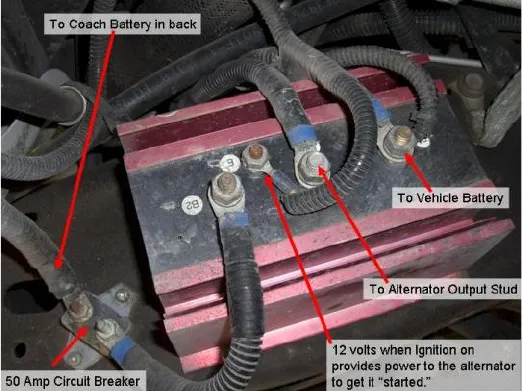
2
Identifying What You Have:
Troubleshooting a complex system with an incorrect picture of what you have is a recipe
for frustration. An accurate description of the system as built is critical to resolving any
problem you might have. Someone may tell you that this is what you need to do and it
may not apply at all to your situation. So be sure you know what you have before you
start.
There are four major configurations which I believe cover most of the Roadtrek’s in use
today.
You might ask; “okay, tell me which configuration do I have?” This question is not so
easily answered, since not every model in a given year was built in the same way.
There are some simple tests you can run to determine which of the four basic
configurations you have.
First, there is the question of the presence of battery isolator or a battery separator. A
battery isolator allows the vehicle engine alternator to charge the RV battery but does
not allow the RV battery charger to charge the vehicle engine battery. A battery
separator makes it possible for the RV battery charger or the vehicle alternator to charge
both batteries at the same time.
Your user manual lists the components and should indicate if you have an isolator or
separator on the “Appliance & Accessory Manufacturer’s Log.” Manuals often have
errors, so your vehicle might not match. The best method is to look for the device on
your machine and compare it with the pictures.
Here is a picture of a typical isolator:
On a Chevy 190V 2002, the isolator is located on a frame member under the front of the
vehicle on the passenger side. I believe in most cases they are located near the engine.










